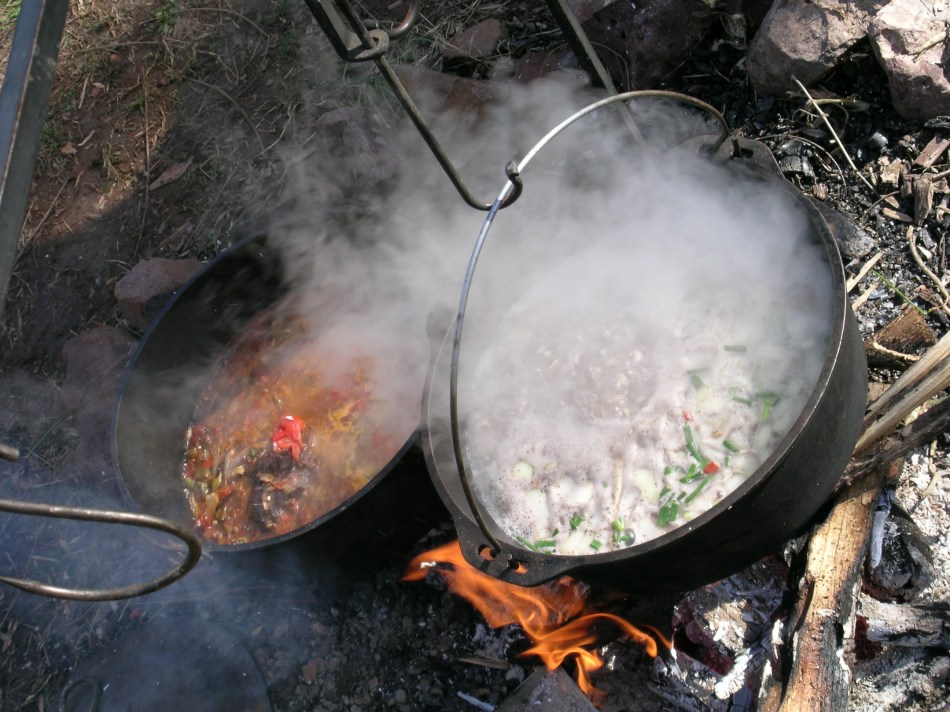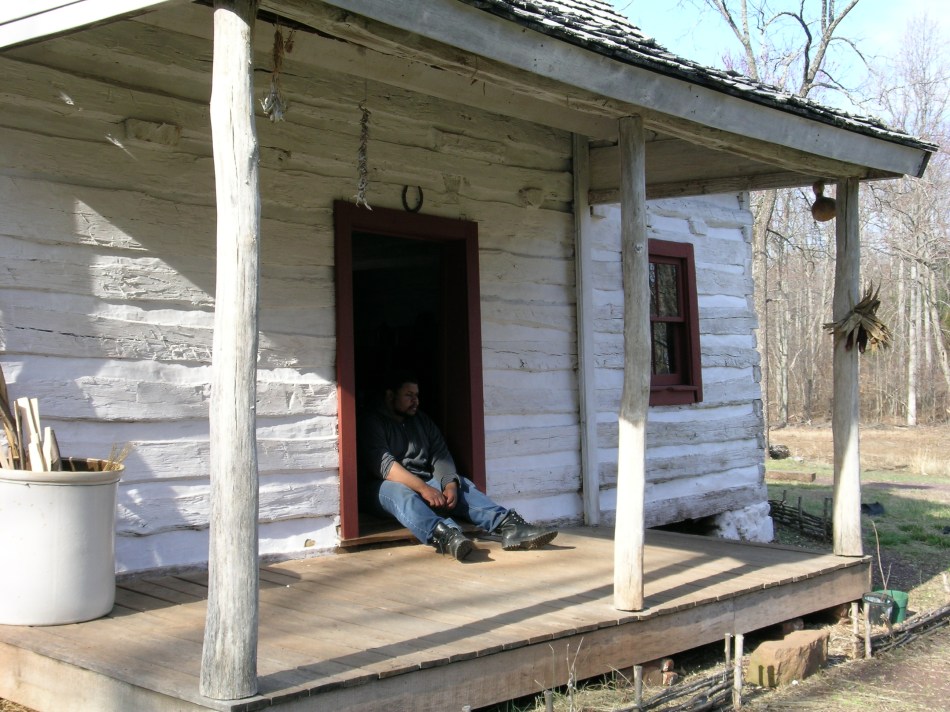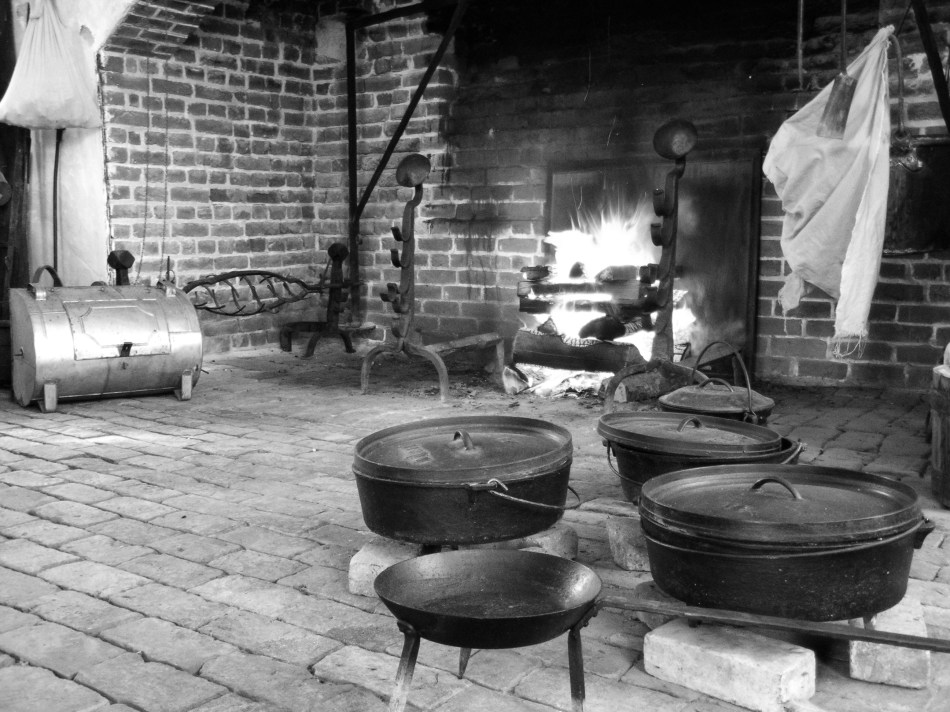There are four aspects to The Cooking Gene–Genealogy, Food History, Identity and Connection/Legacy. The campaign to fund the Southern Discomfort Tour begins February 1, 2012 on Indiegogo.com. The separate blog is launched the same day. I encourage you to make sure everybody in your network knows about it and passes it on! We want this campaign to be as successful as possible!
Food History and The Cooking Gene–the Backstory….

When I was about ten or so, my Grandfather of blessed memory gave me a book, The Masters and the Slaves, (1933). Gilberto Freyre, the famous Brazilian historian and anthropologist. It was altogether interesting but I honed in on the last third of the book called “The Negro Slave.” Freyre painted this picture of Afro-Brazilian folk culture in slavery that was broad brush stroke, but detailed enough that the reader got a feel for what it meant to be an enslaved Afro-Brazilian in say, Bahia or Rio or the rice fields or mine of the north of Brasil. Towards the end of the chapter, Freyre talked about the foods and dishes of Brasil to which the country owed a debt to the presence of enslaved Africans, particularly those from the Yoruba heartland and Kongo-Angola with touches of Senegambia, Guinea-Bissau, the Gold Coast and other regions of Africa’s Atlantic facing coast. Over the years I would read and re-read that chapter, mining those five or six pages about food for all they could give–looking for African American history in Afro-Brazilian history–looking for the cues, the clues, the language that would match.
There it was–the greens, the yams (?), the okra, the hot hot hot chilis, the barbecued meat, the cold drinks to temper the heat, the feijoada, the vatapa, the caruru, acaraje! Foods that bore the creolizing presence of Africans exiled to Brasil–the colony/country in the New World that received the lion’s share of enslaved captives brought from West and West-Central Africa. The more cookbooks and scholarly books I investigated the more of the unique role of Africans emerged. It’s not enough to talk about African contributions to the foodways of the New World or Atlantic world. The West and Central African culinary mind had to wrap itself around a lot of exotic elements both indigenous to the Americas and the Western world, and then interpret those elements in such a way that they could pariticpate in the new food world and meet the demands of their captors. Within a few generations of existing in slavery, the children of the founding generations of enslaved Africans had developed a uniquely Afri-Creole approach to food that bridged the vegivore, hot/spicy palette, high on starch and greens but low on animal protein, one-dish tradition with a protein heavy, baked goods heavy, multi-course, sweeter and softer palette of the colonial-era Enlightenment West. This dichotomy affects the status of African and African foodways today in ways analagous to other cultural riffs between the dominant Western culture and the assumed sub-category of Blackness and Black culture wtihin it. We don’t come from artisan baking and patisserie, smoked meats, cheeses, wines, or even an elaborate culture of court cuisine. That African American men and women were able to cook a ham in such a way that a wife of a Virginia governor exclaimed “it takes a big fat Negro mammy” to impart the right flavor into a Virginia ham; or prepare rolls or cornbread with the kind of local legendary status throughout the colonial and antebellum periods is fascinating. In no other culture enslaved by another group has that enslaved group created so many artifacts, arts, belief systems and cultural practices and cuisines that in turn became adopted by the dominant group and others. The Romans wanted Romanization, the Greeks wanted Hellenization, the Arabs wanted to spread Arabic and Islamic civilization–enslaved Africans didn’t blend in–half of their resistance was cultural. Africanization—overt or hidden—and the response to the African presence would not only come to reverse how the history of cultural exchange had gone for millenia, but helped shaped the modern world and what we know. We were at the right place, at the right time to have a global impact from the viewpoint of our cabins, shacks and huts.
“Every Brazilian, even the light skinned fair haired one carries about him on his soul, when not on soul and body alike, the shadow or at least the birthmark of the Aborigine or the Negro, in our affections, our excessive mimicry, our Catholicism which so delights the senses, our music, our gait, our speech, our cradle songs, in everything that is a sincere expression of our lives, we almost all of us bear the mark of that influence.” –The Masters and the Slaves
“Southern whites cannot walk, talk, sing, conceive of laws or justice, think of sex, love, the family or freedom without responding to the presence of Negroes.” –Ralph Ellison, Shadow and Act
So where does food come in?
Food is as politically powerful and culturally representative as faith. It is our way of delineating “them” and “us.” It works that way even when “them” and “us” eat pretty much the same thing or similar things.
I am doing The Cooking Gene because I am not satisfied with the status quo. We are still–still–in so many books and so many museums just “the slaves,” that Black caste kept out back. The luxury of the big house is celebrated while the inner workings of African American folklife are ignored. I can’t help but see this as an anachronistic worship of the deceased 1 percent. On the other hand, the piling of works on African American food history continue to treat African American food history with more sweep than substance. Historic African ethnic groups and polities and their proper and appropriate articulation is necessary to the defining the art. You can’t just write or talk about okra, black eyed peas, watermelon and rice–the four foods of the OMG I’ve heard this crap before apocalypse—without delving into their domestication, the labor and knowledge systems behind their cultivation, distribution, preparation and consumption. Not to mention–where is the MEANING? As a Jew, I know what challah means. It’s got 4-7 braids, it’s Biblical, it’s Germanic, it’s Russian, it’s Yiddishkeit, it’s American, it’s all the things that the daily black bread was not.
My Jewishness informs how I look at African American food and foodways. Jewish food is fraught with accumulating layers of cultural history and meaning and all of that information is further contextualized by spiritual and religious understandings. To the uninitiated those spiritual trappings are legal, ethical and exegetical. Take challah for example. It’s a term in Hebrew for the shewbread in the Holy Tabernacle and later the Temple. It’s present form is very European and comes out of the Ashkenazi part of the Diaspora. (Other people had their Shabbat breads but they weren’t necessarily challah.) Challah takes part of its form from German breads that call to mind German paganism, but as often in Jewish civilization, as in African civilization–people know something beautiful when they see it–and then they make it their own. The bread that celebrated a German female deity and her braids became the local form for the bread that symbolized the observance of the day of rest as mandated in the Torah. Rabbinic law mandated blessing this bread along with wine to usher in the Sabbath around the table–itself the “mizbeakh” (altar) in the Mikdash Me’at–the home–the “Little Temple.” Challah is the child of German and Russian braided breads, but even then it canbe read as Jewish bread. For example—one still has to “take challah,” or burn a piece of the dough to symbolize the portion for the priests as in the days of the Levites. Challah has seven main ingredients–as in the seven days of the week and seventh day. Challah gets sweeter and plumper and yellower when it migrates across the Atlantic and in America, as the Yiddish lullaby pronounced, “you can eat Challah every day.” To walk into a Jewish home where challah has been baked is to SMELL a Jewish home. The sight of challot freshly baked on a Sabbath or holiday table is iconic to our culture and faith. Even when its just challah French toast–its a part of Jewish identity that continues to morph–but always remains part of the orignal story. This is to say nothing of the endless narratives–midrashim–as well as folktales where Sarah our mother has challah in her tents, or challahs are placed in the Holy Ark of a shul and eaten by a poor man who thinks he is blessed by G-d and so on. All of the layers are there—and all of the stories–all of the history and all of the personal anecdotes that make one food item magical and important to both maker and eater.

In African/African Diaspora/African American foodways we have hundreds of dishes begging for proper interpretation. What’s more these foods not only tell us about the people who created them or the people who consumed them–but about the society that adopts them….There are layers and layers of meaning waiting to be explored, taught about and passed on. There are stories that tell us about our roots, that tell us why we like to eat what we eat, that make lines of connection between ethnicities and lines of “race.” That’s powerful. On this Southern Discomfort Tour I want to meet Chinese families in Mississippi, Kosher cooks in New Orleans, Muslim Southerners from the Middle East, white folks from The Big House and white folks from the mill house, Native American communities, and look at the legacy of African and enslaved cookery in their dietary practices. This isn’t just about Black folks, this is about the South and the United States. American identity’s culinary mosaic glitters with our stones.
Yes, The Cooking Gene will tell a story of how my ancestors fit into this story. After all we were big house cooks, army cooks, Pullman porters, domestics, farmers, gardeners, hunters, butchers, masters, and the enslaved. We had somebody in every aspect of the South’s developing food culture. We will also be going to the places where other African Americans made culinary history alongside white women, Native Americans and others. This is a multicultural, universal story based in the Afrian American tradition. We want to hold museums and mansions accountable for the stories they tell. We want to put an end to the label, “the slaves,” and the unfortunate tertiary role our ancestors are often assigned in pamplets, cookbooks and the New Southern Food writing………….which I think doesn’t go far enough, because often there is not enough knowledge about the source of enslaved people–Africa and the Caribbean and the permutations enslaved life took once those people arrived in the colonies or states. I want to restore the dignity of hard scholarship to our ancestors story, and by doing so–through research, writing, documentation and cooking my arse off–give honor to this story and inspire others to take up the spoon and the skillet.

If you think cultural history or public history is a luxury think again. African America is plagued by food deserts where fresh produce is a luxury. I want to help communities start community gardens where African American and traditional Southern heirlooms grow. I want to use food as a means of creating dialogue to bring racial, religious, and cultural healing across boundaries. I want to cook in historic houses and museums and show the dedication of African American interpreters to owning and accurately interpreting their history as a monument to their ancestors. I hope that by doing this we can write a new chapter in American food history—one that ennobles and integrates rather than denigrates and isolates the story of the African American cook in the Old South.

We also want to apprehend the taste of food. All of this context is nice but I assume that for a lot of you–it really is about the food–fine. Let’s talk about the taste of a fresh Creole tomato or Creole cream cheese. Let’s talk about those Haitian tomatoes that were grown in Philadelphia, Baltimore, Savannah, Charleston and New Orleans after 1792. We can only go so far to answer the question–“What does history taste like?” through our heirlooms or heritage foods and historic cooking method. But these foods taste so different that we know we are being transported somewhere else the minute we take that first bite.

So, what does the Old South taste like? Is it comforting? Is it discomforting? Is it a blend of pleasant tastes and painful memories? Is it the freedom to eat and enjoy the food without the layered guilt of history? Should this food taste differently in my mouth than it does that of my white assistant? I really want to cook with the descendants of the people who owned my family. I want to understand what being Southern and Southern food mean to them and get their insights. The Cooking Gene: Southern Discomfort Tour is a trip into the Old South–not just The South as it exists today. We are purposely going back into the past, in the Time Machine of our minds and research to uncover something left behind–something we need to dig to the truth of–in Ghana, among the Akan peoples, that’s called Sankofa–the idea that we can always go back and fetch what we need to make it through today.

If you’ve wondered about the launch date….January 16 is Dr. King’s birthday observed. Dr. King had a vision—notice I did not say dream—that one day the sons of former slaves and the sons of former slaveowners would join hands at the table of brotherhood….his famous speech catalogued the very places we are going–Down in Georgia, Alabama, Mississippi–places where my Ancestors and their foodsteps made history. I invite you to be part of this project if nothing else than to say you fulfilled a prophecy–for the better of the world and of the better of our nation.
TO LEARN MORE VISIT: www.thecookinggene.wordpress.com
Blessings and good eats
Michael

Dear Mr. Twitty,
San Antonio Missions National Historical Park is producing a podcast that will include photographs of foods grown in 1700 Texas. These videos are primarily aimed toward students in grades 4th-8th, Since we are a federal agency, the podcasts be available for free download.
I am interested in getting and using your photograph of the muskmelon found on https://afroculinaria.com/2012/01/05/the-cooking-gene-food-and-food-history/. Would you be willing to let us use this photograph? Credit would be extended in the closing roll.
I can be reached at the email submitted below.
Sincerely,
Lee Wilder
Park Ranger/Media Specialist
San Antonio Missions National Historical Park
2202 Roosevelt Ave.
San Antonio, TX 78210
LikeLike
Hi, I will speak to the photographer who more than likely will respond with a yes. I would like a favor though–I need some inroads in Texas in terms of places to present and people who would be interested in hearing more about my research. Please see the Terroir Noire: The Foodways of Enslaved Afro-Texans. I have done quite a bit on Texas and even more so since I wrote that piece. Thank you, Michael.
LikeLike
Pingback: If You Like Code Switch, You’ll Probably Like These 5 Food Blogs | Pog Goblin
Pingback: If You Like Code Switch, You’ll Probably Like These 5 Food Blogs | Big Footy News